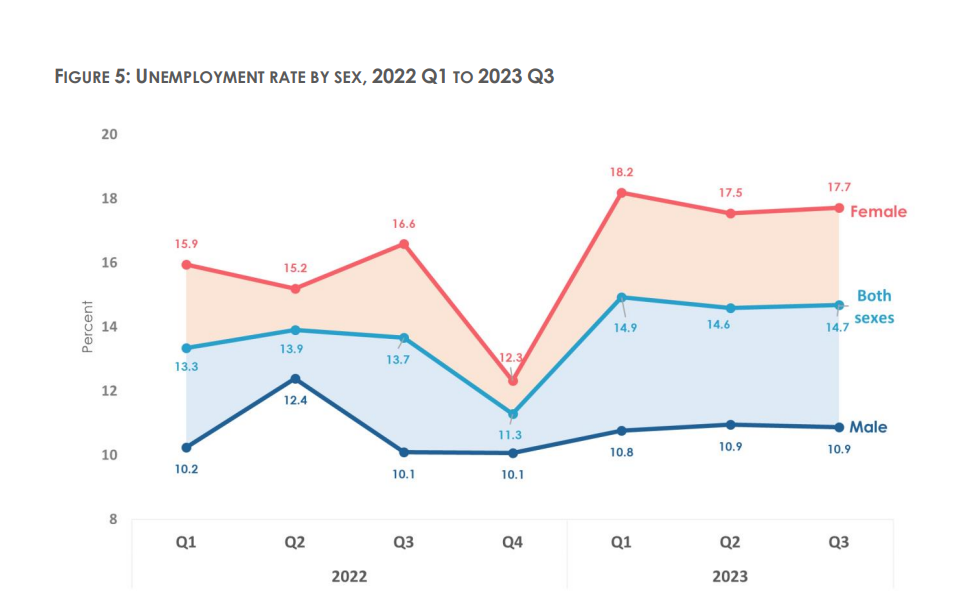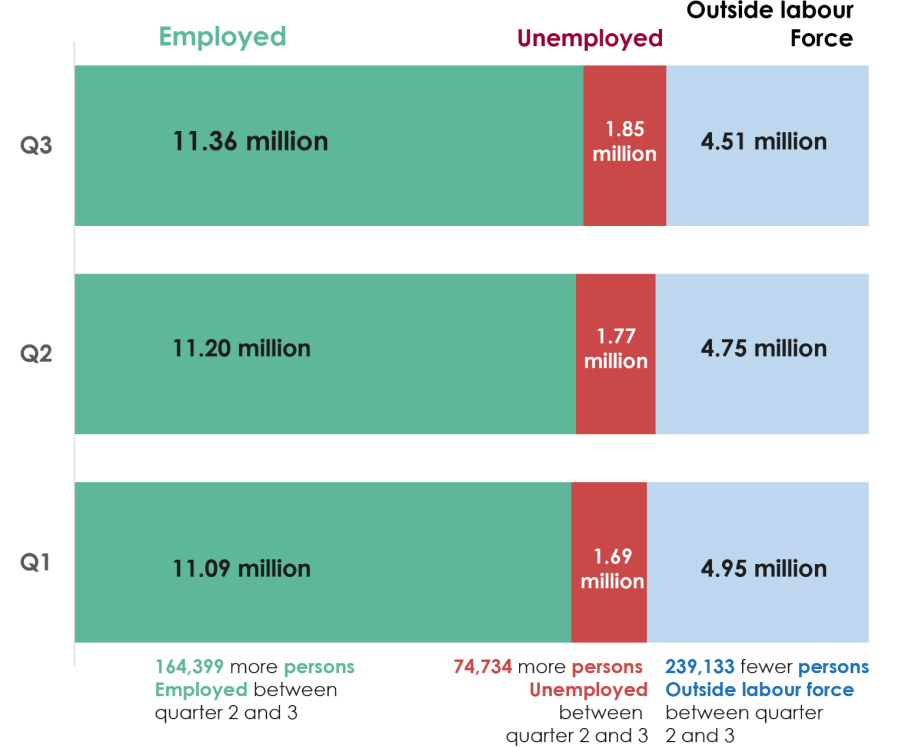
The average rate of unemployment in the country has risen to 14.7 per cent in the first three quarters of 2023.
The number of unemployed youth aged between 15 and 35 rose from about 1.2 million to over 1.3 million during the same period, with the rate among females consistently higher than that of males.
This is according to records sourced from the Annual Household Income and Expenditure Survey Quarter Three Labor Bulletin by the Ghana Statistical Service (GSS).
The survey further indicated that the number of youth without jobs in 2022 only saw a dip in the second quarter of last year.
The sharp increase in the unemployment rate of females between the fourth quarter of 2022 and the first quarter of 2023 has culminated in a wider unemployment gender gap in 2023 relative to 2022.
About 440,000 people joined the labour force between 2023 Q1 and 2023 Q3, of whom more than 60.0 percent were employed during the period.
Consistently, more females than males have been employed, with the difference averaging about 600,000 and 900,000 for 2022 and 2023 respectively.

The number of employed persons in urban areas remained nearly the same in the first three quarters of 2023 after quarterly variations in 2022.
The number of employed persons in rural areas increased for five consecutive quarters from 2022 Q2, before declining in the third quarter of 2023.
The difference in unemployment rates between urban and rural areas widened successively for the first three quarters of 2023.
In the second and third quarters of 2023, the urban unemployment rate was almost twice as high as in rural areas.
The average unemployment rate for the first three quarters of 2023 was 14.7 percent, with the rate among females consistently higher than males.

The sharp increase in the unemployment rate of females between the fourth quarter of 2022 and the first quarter of 2023 has culminated in a wider unemployment gender gap in 2023 relative to 2022.
The labour force participation rate increased significantly between the fourth quarter of 2022 and the first quarter of 2023 but remained stable across the first three quarters of 2023.
Consistently, the ability of the labour market to absorb or accommodate individuals seeking employment (absorption rate) increased from the second quarter of 2022 to the third quarter of 2023.
 Uniquenewsgh.com News, Politics, African News Updates & More
Uniquenewsgh.com News, Politics, African News Updates & More


